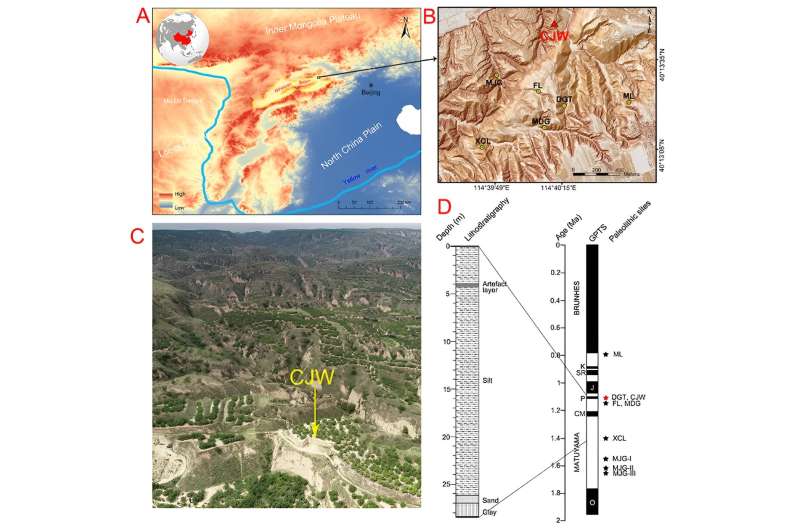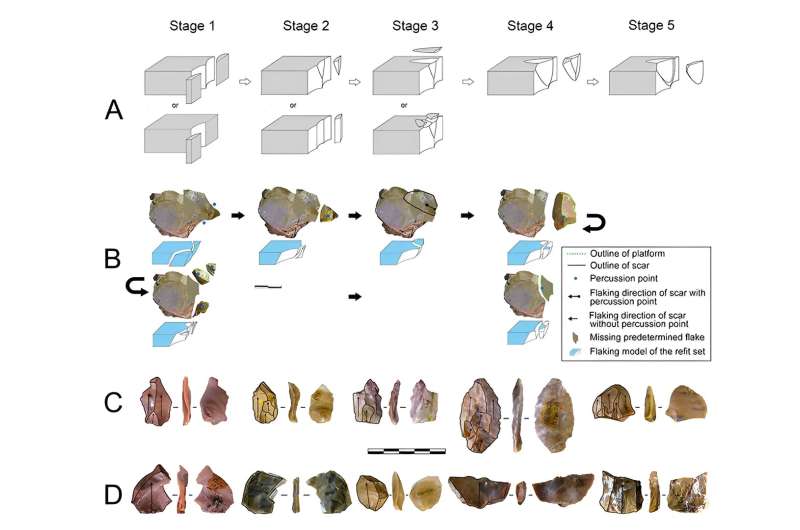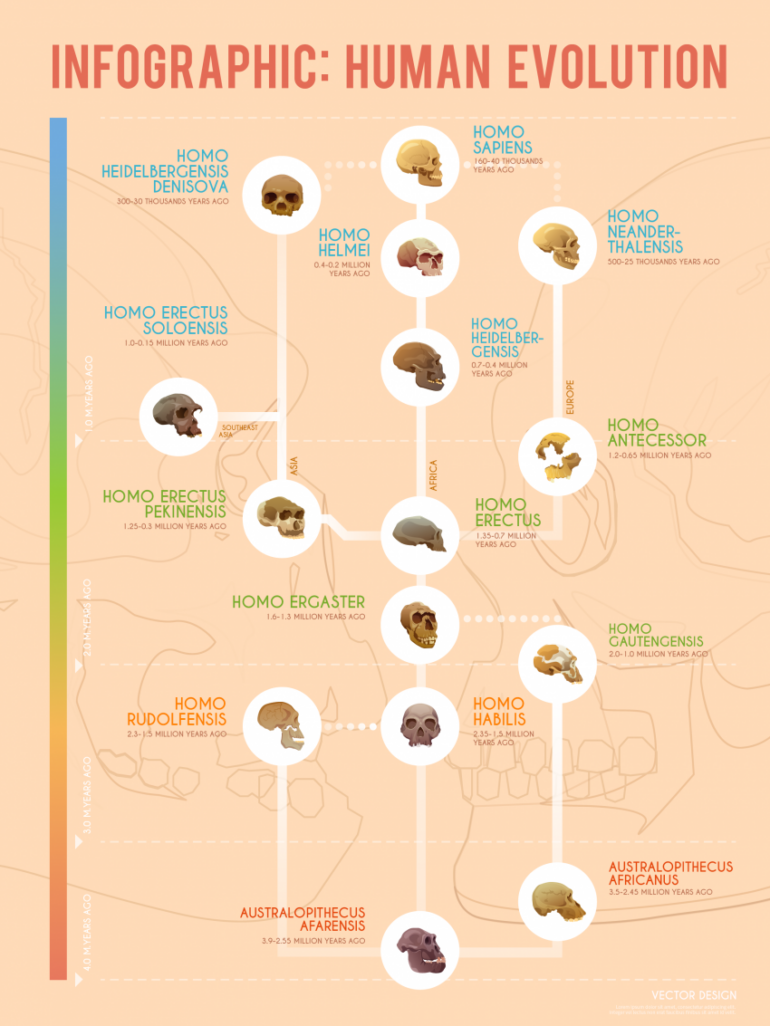A new study from the Nihewan basin of China has revealed that hominins who possessed advanced knapping abilities equivalent to Mode 2 technological features occupied East Asia as early as 1.1 million years ago (Ma), which is 0.3 Ma earlier than the date associated with the first handaxes found in East Asia. This suggests that Mode 2 hominins dispersed into East Asia much earlier than previously thought.
The study, which was conducted by a joint team led by Prof. Pei Shuwen from the Institute of Vertebrate Paleontology and Paleoanthropology (IVPP) of the Chinese Academy of Sciences and Prof. Ignacio de la Torre from the Institute of History the Spanish National Research Council (CSIC), was published in the Proceedings of the National Academy of Sciences on Mar. 4 and provide insights into the early dispersals and adaptions of hominins in Eurasia.
By reconstructing Cenjiawan refit sets from Nihewan basin, the research team discovered organized flaking techniques that aimed at producing slender flakes by core preparation on both the striking platform and flaking surface. The standardized operational process was not only shown by refit sets: Plenty of products detached at each stage of the process, thus providing strong evidence of standardized core preparation.
Prepared core technologies were characterized by organized methods to obtain predetermined flakes that required detailed planning and a deep understanding of flaking mechanisms, which originated in the Acheulean and particularly more than 1.0 Ma.

The CJW site and Lithology of the CJW profile and corresponding magnetic polarity time scale. © IVPP
Regarding retouched tools, technological analysis of refitted products detached from the prepared core technology indicates intentional breakage of slender flakes in two halves. One or more of the resulting fragments were then selected as blanks for retouching, with the aim of creating tipped tools with two convergent sides, thus significantly altering the original shape of the blanks.
In addition, patterns of retouching tools like points and borers, which showed standardization of tool shape, were also well documented in the Cenjiawan assemblage, thus suggesting complex mental templates among the Cenjiawan toolmakers.
The prepared core technology, standardized predetermined products and retouching tool shapes, together with the high level of manual precision, fragmented reduction sequences, long reduction sequences, and organized management of raw materials documented in the Cenjiawan assemblage, provide compelling evidence for complex technical abilities and in-depth planning behaviors among Early Pleistocene hominins in East Asia.

Operational scheme of prepared core technology (A and B) and predetermined products in CJW (C and D). © IVPP
“The advanced technological behaviors documented at the Cenjiawan site similar to those of Mode 2 technology, rather than the technical simplicity attributed to Mode 1,” said Dr. Ma Dongdong, first author of the study, who conducted the research during his Ph.D at IVPP and currently is working as a postdoctoral researcher at the Institute of History of CISC.
The Lower Paleolithic technology in China has long been regarded as simple (Oldowan-like/Mode 1) and homogeneous before late Pleistocene. The compelling evidence in the Cenjiawan assemblage provides a new perspective in understanding the small debitage system in China and may force a reconsideration of current perceptions of technological stasis in East Asia.
The authors argued that the technological features, rather than the mere presence or absence of specific tool types (e.g., handaxes), should be the basis for studying Early and Middle Pleistocene assemblages in East Asia. This enables a more integrated understanding of Mode 2 technology as well as the human cultural and biological connections between East Asia and other regions of the Old World.
More information:
Dong-Dong Ma et al, Earliest Prepared core technology in Eurasia from Nihewan (China): Implications for early human abilities and dispersals in East Asia, Proceedings of the National Academy of Sciences (2024). DOI: 10.1073/pnas.2313123121
Provided by
Chinese Academy of Sciences
Citation:
New timeline for East Asian hominins’ tool-making revealed (2024, March 5)
